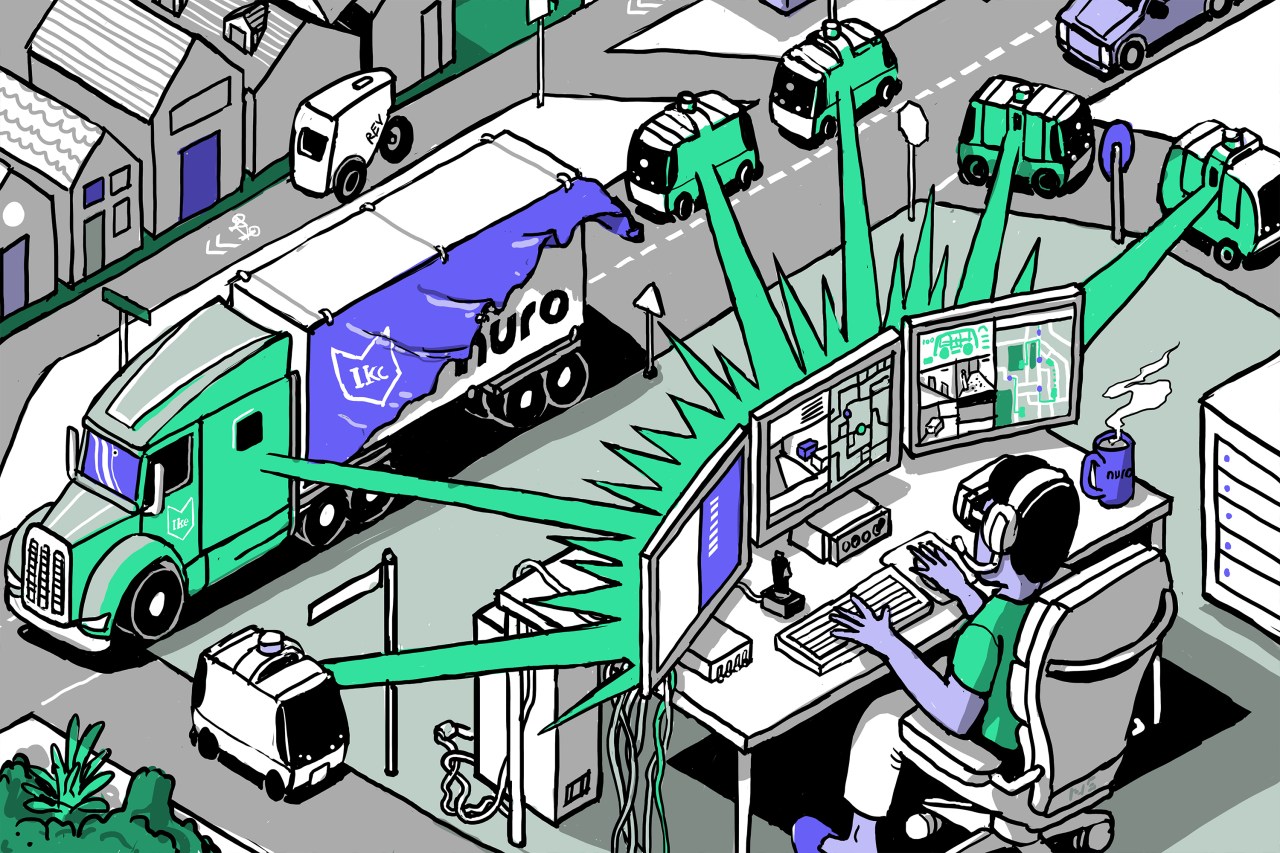As technology accelerates towards a more automated future, the once fantastical idea of friendly neighborhood robots delivering our everyday needs is quickly becoming a reality. Nuro, an innovative startup specializing in autonomous delivery vehicles, is leading this charge, carefully balancing the dynamics of advanced robotics and community interaction. In this blog, we’ll explore how Nuro is shaping our future, from the inception of its robot fleet to the community engagement strategies that ensure these technological marvels become trusted companions, rather than feared intruders.
The Arrival of Autonomous Deliveries
Picture this: a sleek, autonomous vehicle pulls up outside your home, delivering groceries or even pizza without the need for human intervention. This is not science fiction but a glimpse into the evolving landscape of urban logistics powered by Nuro’s delivery robots. Notably, the R2 robot, which became operational in Houston through a partnership with Domino’s, signifies a groundbreaking moment in direct consumer engagement with autonomous technology.
- Robot Interactions: Imagine ordering a pizza and receiving it from a robot that you can track in real-time through an app, culminating in a unique PIN-entry for delivery. This interactive experience transforms a mundane activity into an engaging one.
- Community Engagement: The acceptance of these robots often comes down to the emotions they evoke. Nuro’s chief innovation officer noted that customers frequently express gratitude to these robots as if they were sentient. This seemingly trivial behavior plays a vital role in fostering a connection between humans and machines.
Mapping the Future: Precision and Planning
The groundwork for deploying these robots involves meticulous planning and mapping. Nuro employs advanced technology, including modified Toyota Priuses equipped with an array of cameras, lidars, and radars to create a detailed map of local environments. This level of detail extends beyond simply knowing where to go; it encompasses understanding interactions with infrastructure such as traffic signals and road conditions.
Jones Satrom, Nuro’s head of operations, emphasizes that the detailed mapping allows for safe navigation, even accounting for changes in serviceability. For instance, they ensure that robots do not operate in snowy conditions until they can guarantee efficiency and safety. Such strategies highlight the careful, measured approach Nuro adopts towards entering a new market.
The Role of Guardian Operators
Even in an age of advanced technology, humans remain an integral part of the equation. Nuro employs guardian operators who monitor the robots and step in when necessary. Similar to a safety net, these operators are not just tech-savvy drivers; they engage with the technology to assist in its development and refinement.
- Assisting Autonomy: Instead of perceiving their role as mere drivers, guardian operators view themselves as integral players in the robotic ecosystem. They help enhance the machine learning systems that direct these robots, providing critical feedback to engineers.
- Unexpected Situations: Despite the sophisticated hardware Nuro uses, real-world scenarios can be unpredictable. Guardian operators are prepared to intervene during atypical situations, ensuring that the system operates smoothly.
Addressing Challenges Head-On
The journey towards full autonomy presents numerous challenges. From adapting to varying climates and understanding urban geometries to navigating crowded streets, Nuro acknowledges that its robots are on a learning curve. For example, deploying their technology in different geographies demands continuous adaptation and fine-tuning of operational methodologies.
Moreover, the lessons learned from the pandemic have spurred Nuro’s transition from a research and development-focused company to one that is customer service-oriented. Their robots played a pivotal role during crises by delivering essential supplies, showcasing their potential for impact. Such agile responses demonstrate that flexibility and responsiveness are critical in navigating the rapidly changing tech landscape.
Looking Towards the Horizon
As Nuro forges ahead, the integration of these robots into society hints at a transformative future for deliveries. The intersection of human interaction, technological advancement, and community-oriented services suggests that soon robots will not only serve our needs but also earn their place within our neighborhoods. The prospect of ultra-low-cost robotic deliveries shines bright and sets a promising outlook for logistics in urban settings.
Conclusion
The evolution of Nuro’s friendly neighborhood robots signifies much more than mere automation; it embodies the essence of human-robot collaboration that can enhance daily life. As these systems learn and adapt, they hold the potential to reshape our delivery landscape entirely. The future may indeed be one where receiving goods feels less transactional and more akin to welcoming a friend.
At fxis.ai, we believe that such advancements are crucial for the future of AI, as they enable more comprehensive and effective solutions. Our team is continually exploring new methodologies to push the envelope in artificial intelligence, ensuring that our clients benefit from the latest technological innovations.
For more insights, updates, or to collaborate on AI development projects, stay connected with fxis.ai.

